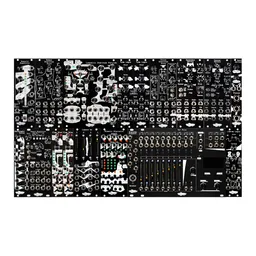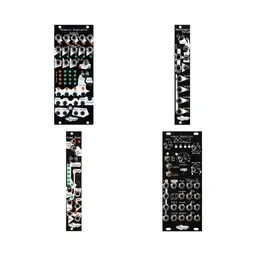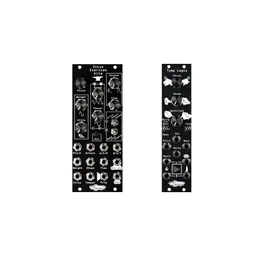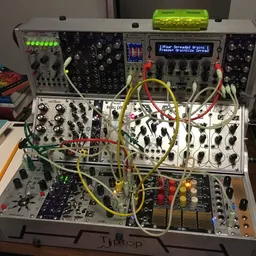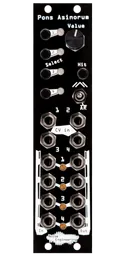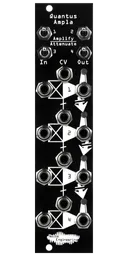A while back, we shared an interesting way to create hi-hats out of a complex oscillator. Today, we’ll be chatting about another percussive technique for creating claps that can be used with a number of different sound sources.
Bandpass filters: they’re pretty awesome
Claps are difficult to accurately emulate, and because of this samples are often the go-to in drum systems. However, it’s really easy to make something that sounds close enough to a clap for a lot of uses. Something noisy through a carefully-tuned resonant bandpass filter gets us the timbre we need, and a quick decay envelope and a VCA finishes out the patch.
I generally tune the bandpass filter to somewhere around 1-2khz, with a reasonably high resonance setting: this emphasizes the right part of the spectrum to get a hollow clap feel. The decay envelope and VCA creates the dynamics that we need to turn a drone into something percussive: I used Pons Asinorum and Quantus Ampla in this patch, but any envelope and VCA combo you have in your system should do the trick.
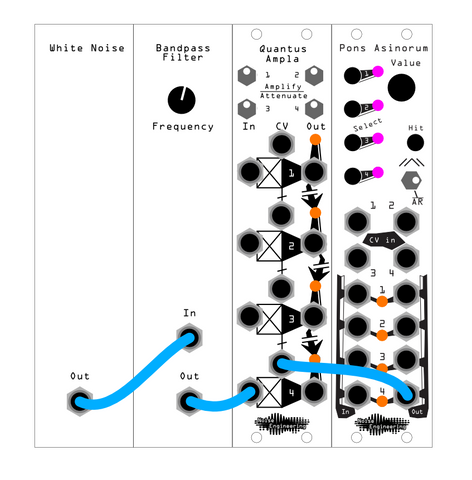
Adding some subtle reverb also adds another element of realness to our not-so-real clap. We’re used to hearing clapping in big, open spaces, so adding some atmosphere with a reverb like Desmodus Versio helps our ears make the sonic association. A tiny bit of reverb goes a long way in this situation, so try some minimal settings as a start.
As with any percussive sound, using compression can help emphasize the transient – the big, impactful part of the sound – and make our percussion stand out in a patch. Mild distortion like soft clipping or saturation is also a useful tool for rounding out percussion like this: I used Librae Legio to add some compression and soft clipping to this clap, and it added some next-level punch and character to the resulting sound.
Complex oscillators for percussion synthesis
We can take this patch even further with a new sound source in place of our white noise. Other types of noise are an easy choice (whether that’s different colors of noise, or digital noise generators like Ataraxic Translatron). I went a step further and used a Loquelic Iteritas on a particularly inharmonic and noisy setting to create a wild, slightly metallic timbre that’s a wonderful starting point for percussion. This isn’t a particularly percussive sound on its own, but popping it into our filter/VCA patch from before we get a surprisingly unique clap sound:
This sort of sound can be created with many complex oscillators: tune the oscillators to inharmonic ratios, add a lot of FM, and use harmonically-rich waveforms like saws and squares as the starting point for claps, hats, and metallic percussion. These patches can be challenging to dial in, but offer a huge amount of flexibility!
